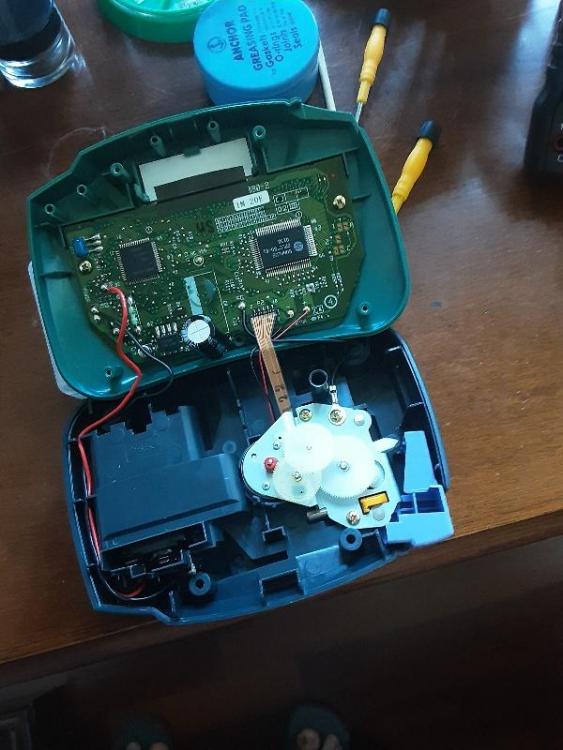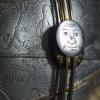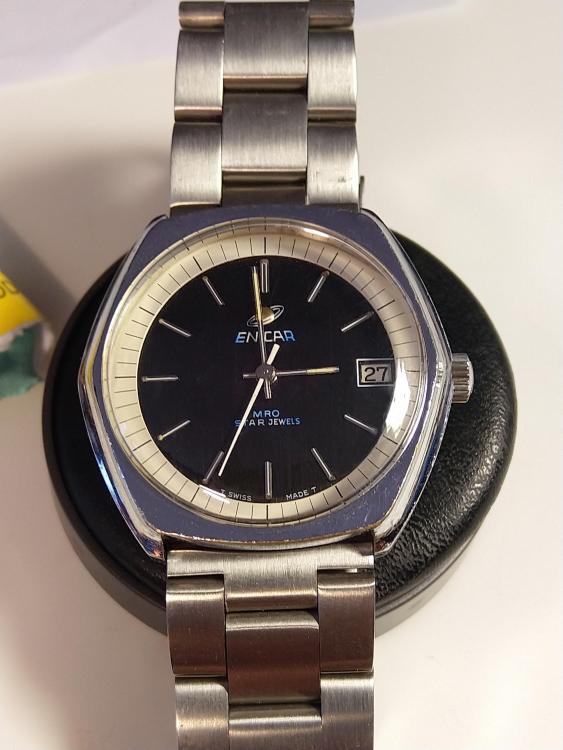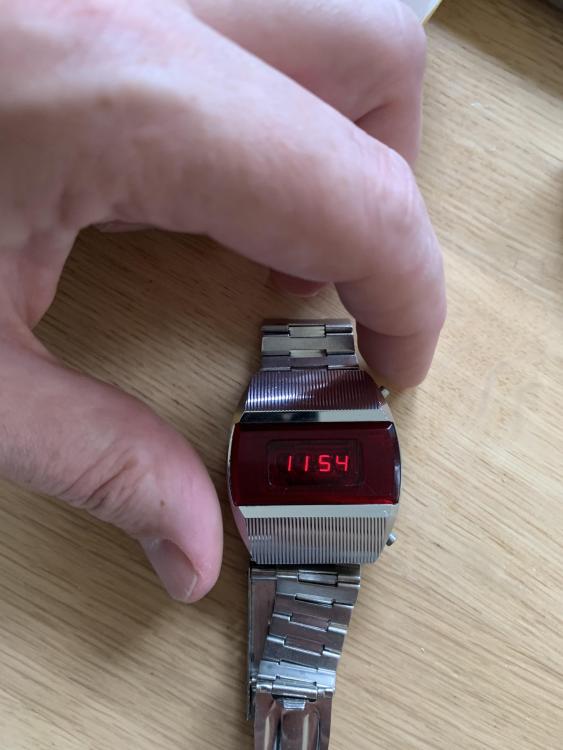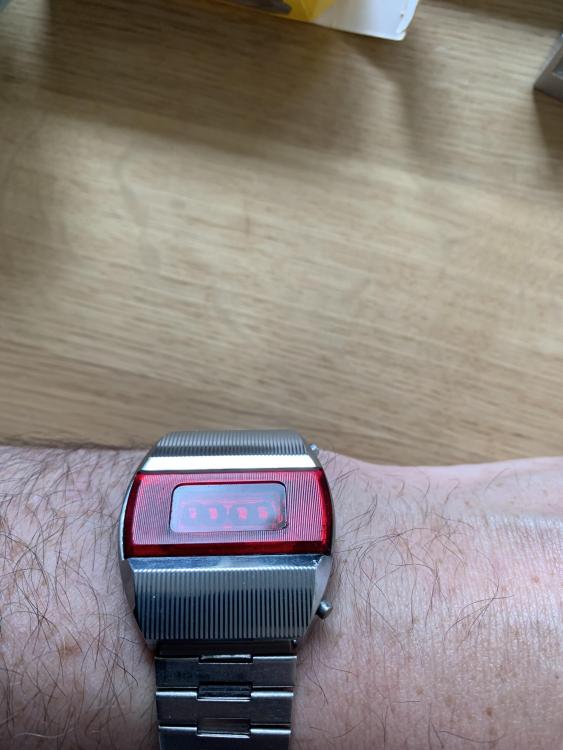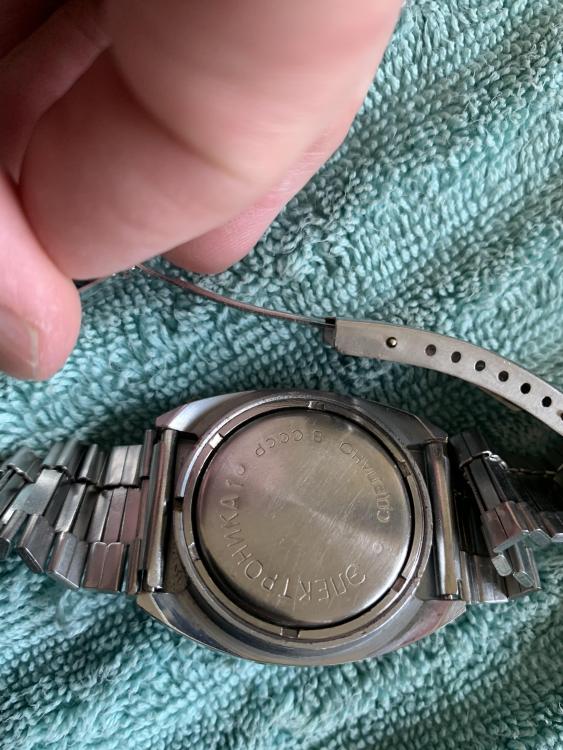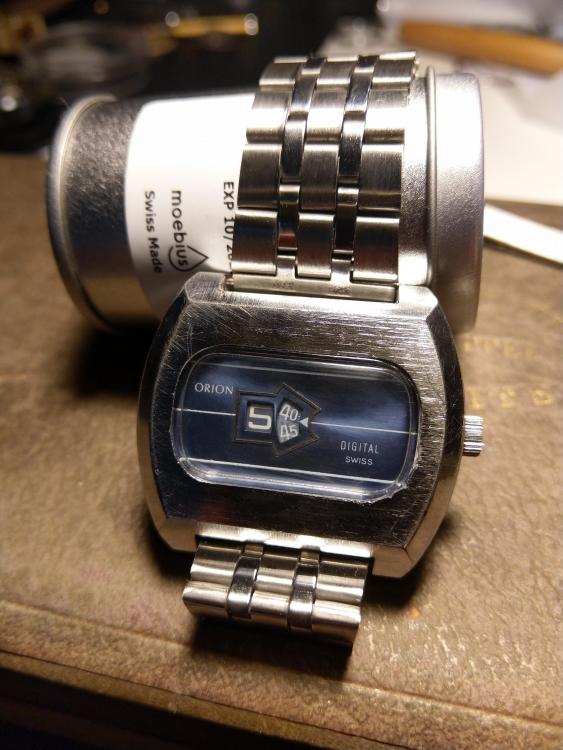Leaderboard
Popular Content
Showing content with the highest reputation on 08/22/20 in all areas
-
I have always found it frustrating to diagnose and repair, as one's attempts are too often unfruitful and and hindered by lack of costly and difficult to master equipment. I have had my highlights as in diagnosing hardware bugs from my software point of view, or saving good money by replacing a power supply capacitor, but will never get to love it. Latest failure, tried to repair my old label printer, the LCD would go crazy flickering when displaying more than 5 letters out of the 10, but it was printing just fine. All I did was to remove for measuing and fit back the single non-SMD capacitor, which proved fine, and testing in circuit two or three of the SMD ones - which of course was inconclusive. I am absolutely sure to not have slipped probes or the like. Now the LCD lits all the segments as if the CPU doesn't start. There is a decent service manual available but is not like on can go crazy after something like that. Really I like better to work on an hairsping at least I can directly see my mistakes and progresses.3 points
-
Another interesting comments in this discussion? Will note that the original poster didn't say he was experienced or even smart or actually I don't see any text at all other than title? I'm guessing the original poster thought we were all horological gods and we can look at the picture and tell him where the parts go which so far I've noticed nobody's Done yet?3 points
-
It is an all to familiar story. I used to fix electronic equipment for a living (or at least part of my living was made by repairing electronic stuff). Sadly most "stuff" these days is not designed to be fixable. Typically there are no schematics, no spare parts, and proprietary vendor lock-in designed into the product to force you to bin it and buy another. Ink jet printers are perhaps the prime example of cynical engineering. A device which forces you to buy ink (basically carbon black, or cheap pigment in a suspension) at prices that make it more expensive per gram than exotic perfumes, or rare elements. I'm a fan of open source software and hardware, and tend to use it where possible. My guess with your device is poor solder some where. Second guess would be cracks in the PCB or bad connector contacs. Third would be a failed capacitor. The next suspect would be, that blue ceramic resonator in the top left. All guesses base on previous experiences. Sadly the cost of your time usually outweighs the cost of replacement for the majority of this stuff, so off to the landfill they go.3 points
-
Hi Find attached the tech sheets for the Tissot 782 and 782-.1. Nicklesilvers post is the clue, see what fit where and don't force any thing and eventually it will ll fall into place good luck next time make little drawings as to which way, up things go to go with pictures. Nucejoes advice is good work from the mainspring (Largest) to the escape wheel. 2790_Tissot 781.1,782.1,783.1,784.1 (5).pdf 2789_Tissot 781,782,783,784 (3).pdf2 points
-
I remember when I was in school, I had completed all my work and was (literally) practicing my yo-yo skills, and my teacher gave me a minute repeater that was totally disassembled. I think he just wanted to keep me busy for the rest of the week! As I had never seen one, I started by seeing which bridges fit where. Then which components could fit under that bridge. Little by little it got decoded, and what a rush! Remember that nothing ever needs to be forced, everything has a function and it's all logical. I do still take pics of the click spring on some 70s ETAs (ugh), those can be mindbenders. The old Tissot movements were well made, if you get really stuck post a pic and the folks here will sort you.2 points
-
I find that it interesting statement? If we have a makers name and a caliber or model number and were lucky we might find a service bulletin. That would help us to figure out how to put the watch back together. Or even the parts list is helpful in that if we can identify the parts it would give us a clue where they go in the watch.2 points
-
2 points
-
The problem with some watches is if you're lucky you have what you have which is more than just a parts list otherwise nothing exists at all. First link somebody servicing the watch doesn't really show lubrication though. Second link you can translated to English but my past experience with translating horological technical to English is the wording sometimes doesn't quite come out right but it's better than nothing. Third blank 28 volume said of chronograph books. Each book covers one specific chronograph in detail and you should build a look at one of the volumes similar age to yours and get some ideas of what you're supposed to be lubricating or not. The CD is very well worth it versus trying to buy the complete sets which can get really really pricey and physical form. Fourth flank a really good book on chronographs covers a little of everything. https://watchguy.co.uk/service-heuer-carrera-valjoux-92/ https://translate.google.com/ https://www.ebay.com/itm/Esembl-O-Graf-Chronograph-Watch-Course-Vol-1-28/402357658796?hash=item5dae62a4ac:g:TuwAAOxy3NBSdB80 https://www.amazon.com/Chronograph-Its-Mechanism-Repair/dp/B0058NJFVE2 points
-
I was pretty good! I could do the Atom Smasher! But this was pre-Youtube days, a year later I understood I was a better watchmaker than yo-yoer. Still impresses the kids though. That atom Smashing skill shows an exceptionally high level of hand and brain coordination, which you put use in watchmaking and the results you got proves the point. Us human being tend to enjoy doing what we are good at or is vecre versa.1 point
-
Hi JohnR725 Like you I give the crystal ball a miss. Unless you need a paper weight. as you remark the picture quality is not the best which adds to the problem. One can hope that if the OP still. requires help he will furnish us with the information and better pictures. We can only do our best cheers1 point
-
Actually I think a crystal ball would be helpful from time to time in watch repair so if you happen to know a good source I would be interested in buying. Although I probably can't afford it and the learning curve to actually interpret the results correctly is probably quite steep so it probably would be worthless just a big chunk of round the glass but I could be wrong. One of the things a discussion like this demonstrates is we each approach the problem solving differently. Then the lack of information as we all have slightly different questions with no answers apparently coming as of yet makes it very difficult to proceed with where those mystery parts go because the picture really isn't the best when I zoom in as to what exactly they are?1 point
-
Not uncommon, not a problem but a great chance to exercise out most useful tool, the brain. Try not to just physically check which parts fits where, rather go back to books or training, absorbs the fundamentals, what is the first wheel? How the second wheel looks like, BTW why they never mention a second wheel? And so so on. You won't have to count teeth and ratios but great if you do. Why, why, why ask yourself. Unlike other things in life the good answer is there waiting.1 point
-
Yes, a rushed and assuming posting, as we see ssometime. Let's be comforted by our community having so many friendly and detailed members, new and old.1 point
-
I think your best option with a case like that is either to spread the case back somehow, or close the mid case. The former is less likely to be noticeable cosmetically, but you might have to be good at improvising a method.1 point
-
Christian AKA "The Watch Guy" seems to be quite enjoying himself with his CNC set-up and managing to get watch parts out of it for under £800 including shipping. https://watchguy.co.uk/a-new-era/#more-13796 https://watchguy.co.uk/cnc-machine-saves-a-prince/ I guess it depends on what parts you want to make. It seems that wheels are proving a bit more challenging but not impossible. https://watchguy.co.uk/cnc-update/ https://watchguy.co.uk/one-step-closer/1 point
-
Hi that should be the case but be careful, removing the broken screw, try to unscrew it with a needle point it may be loose enough to un wind hopefully cheers1 point
-
A very interesting statement indeed. If the need was useless why would manufacturers bother to put the numbers and makes stamp on them at all. After all one watch looks very much like another. But not being a genius and not having second sight we need to start somewhere and the best place is the begining as we do not know of the history of the watch to date. In this case there is no data to act upon so therefore we need a starting point and possibly a service sheet to determine if anything is missing. cheers1 point
-
the plate side incabloc spring came free while i was gently pushing it up to take out the jewels. It seems impossible to reinstall it into the hing slots. Do i need to push out the metal bushing slightly to get it back in place? The spring is undamaged but i dont know any other way to reset the spring without damage. Can someone give me some process tips? Thanks so much. I find these settings to be the most difficult part of the watch cleaning process. I now work in a white creme brulee bowl in case of pings. I reassemble the entire movement with a cleaned balance wheel/hairspring. Then i place the movement in its holder down into the ramekin to do the incabloc removal. The wall of the ramekin stops the sideways pinging from sending the object across the floor into oblivion Hairsprings have nothing on these incablocs!1 point
-
I have in the past tapped the top of the center wheel pinion with a stake to loosen a cannon pinion that I was having a real hard time removing. A dangerous move for sure. Sent from my iPhone using Tapatalk Pro1 point
-
Hello and welcome to the forum, If you post the caliber and make of the watch and some pictures them the members will be able to identify the watch and give help should it be required cheers1 point
-
Welcome to the forum. There are techsheet available on some calibers, you may also find helpful walkthroughs on this forum. Taking pix is always a good idea.1 point
-
Probably restricted to SWATCH affiliates. Ebay's going to be your best bet going forward. https://www.ebay.com/itm/ETA-2824-2-2834-2-2836-2-center-tube-Tubus-tube-de-centre-/2532337798241 point
-
Yes, happened to me before. Usually it's the Chinese movements that have this problem. It traumatized me so much that I have a phobia of opening incablocs. The problem is using fine tweezers to hold the spring and trying to muscle the end into the hinge hole. It'll will rotate and ping into oblivion. I found a simple solution to this. You need to hold both ends of the incabloc spring simultaneously in order to manipulate it into the hinge. I used a pair of eyebrow tweezers for this, about 3-4 mm wide. ( Just borrow one from your boss when she's not looking. ) Grip across the entire spring, get one end of the spring into the hole first then muscle it in or use a screwdriver to nudge the other end in. Works everytime. But it still give me the shivers to pop open an incabloc.1 point
-
That's unfortunate, but don't despair. You can approach this in two ways, if you're nervous about trying anything with the block... well... if it came out it should mean there's a way back in without that, but it is harder, i've only had to do it one time, the slot barely showing proud of main-plate by a micron, you need to use rodico to handle the spring, and peg-wood to make adjustments, poking it here and there, and just try to slide it back in somehow, that is once you've located the opening. (at least that's how i did it) Another time i did have to use a staking set to partially punch out the block, this made getting the spring in a lot easier, but it is a job in and of itself, not especially difficult per se, with the right punches and a bit of precision on your part, but as i'm sure you understand you probably dont want to upset the blocks original position too much, getting it back in more or less exactly how deeply it was to begin with, i can't imagine there's a lot of tolerance there before you'd cause a problem, it worked out well for me though.1 point
-
The only thing in english is the7750 tech sheets wether those would suffice I know knot but I have attached the sheets for your interest 1077_ValJoux 7750 Pages 19-23.pdf1 point
-
I found you a few links you can do some reading. Unfortunately no simple answers here? A lot of it depends upon what you want to do. For instance you're working on vintage American Watches a certificate is a waste of time it won't help you with anything. On the other hand if you want to do modern watches Want to get spare parts you're not going to get the spare parts unless you have a certificate. But even that's not clear-cut some of the companies will still require you to take their class with their test and get a certain score or else. Oh and for spare parts even if you complete the test and all of that is still need to buy a heck of a lot of expensive tools because expensive tools indicate that your qualified professional person. But If you just want to walk in and take a exam except you can't walk in you have to look at the schedule when the exams are given I believe both the BHI and AWCI have exams you could take. Then the other two lengths wostep and sawta These are basically schools and if you want to complete their tests and have one other certificates you really should take their classes. http://www.wostep.ch/en https://www.awci.com/ https://bhi.co.uk/ http://www.sawtacertification.org/ Then we have things like this a wostep school with a one year program versus the normal two-year program. Also the programs interesting in that is free tuition free the only need to buy a few tools for about $3000. That tells a little about the skill set you going to learn and become a technician and it does mention something about swapping movements I'm not sure is a technician with your authorized actually disassemble a movement. http://www.nghayekwatchmakingschool.org/The-Schools/miami/Schooling-Programm.aspx1 point
-
1 point
-
Finally got round to sporting my Soviet era “Polarski” Elektronika 1 today. Wife hates pretty much all of my collection, but out with her friends last night - they are both into 60s and 70s retro furniture and design. They loved it! The husband especially got a kick out it being stamped in Cyrillic “made in CCCP” Her female friend wants any ladies LED I can find for her - I just happen to have few kicking around1 point
-
1 point
-
There are numerous reasons for the differences. First of all, ensure there's little to no ambient noise in your timing environment. The watch itself- How new/old is it? Has it recently/ever been serviced? What was the state of wind on the mainspring for each test? What is your typical daily use and most common position of the watch throughout the day, (Most common are pendant down, pendant right and dial up) If it's a non manual wind movement like the 7S26 etc then unless you wind directly on the barrel it's pot luck knowing what the state of wind is and the readings on some movements due to cost/manufacture/lubrication/dirt/general quality can differ dramatically in varying states of wind and even be affected by variances in temperature, (try regulating an old pin pallet 0 jewel escapement, they're fun). Don't be drawn into thinking the machine gives you the ability to regulate any watch into a definite precise loss or gain in seconds, it's simply a very accurate device to help diagnose and set timing much more quickly and accurately than the old fashioned methods of timing against another watch or clock over several hours or more. You always need to think about your typical wear and activity and always try to average results across your typical wear positions. You'll notice if you ever time a very high quality movement there'll be very little positional error and temperature related error because they are made to much tighter tolerances hence the reason most movements that we wear or work on will be guaranteed to be within -/+ 26s a day or thereabouts whereas a COSC certified will be within -2+6 (if memory serves there). For consistency in checking after a service I typically wind fully then unwind one full turn of the barrel using a screwdriver or the stem whilst releasing the click, this ensures good camparison readings across a set amount of time.1 point



